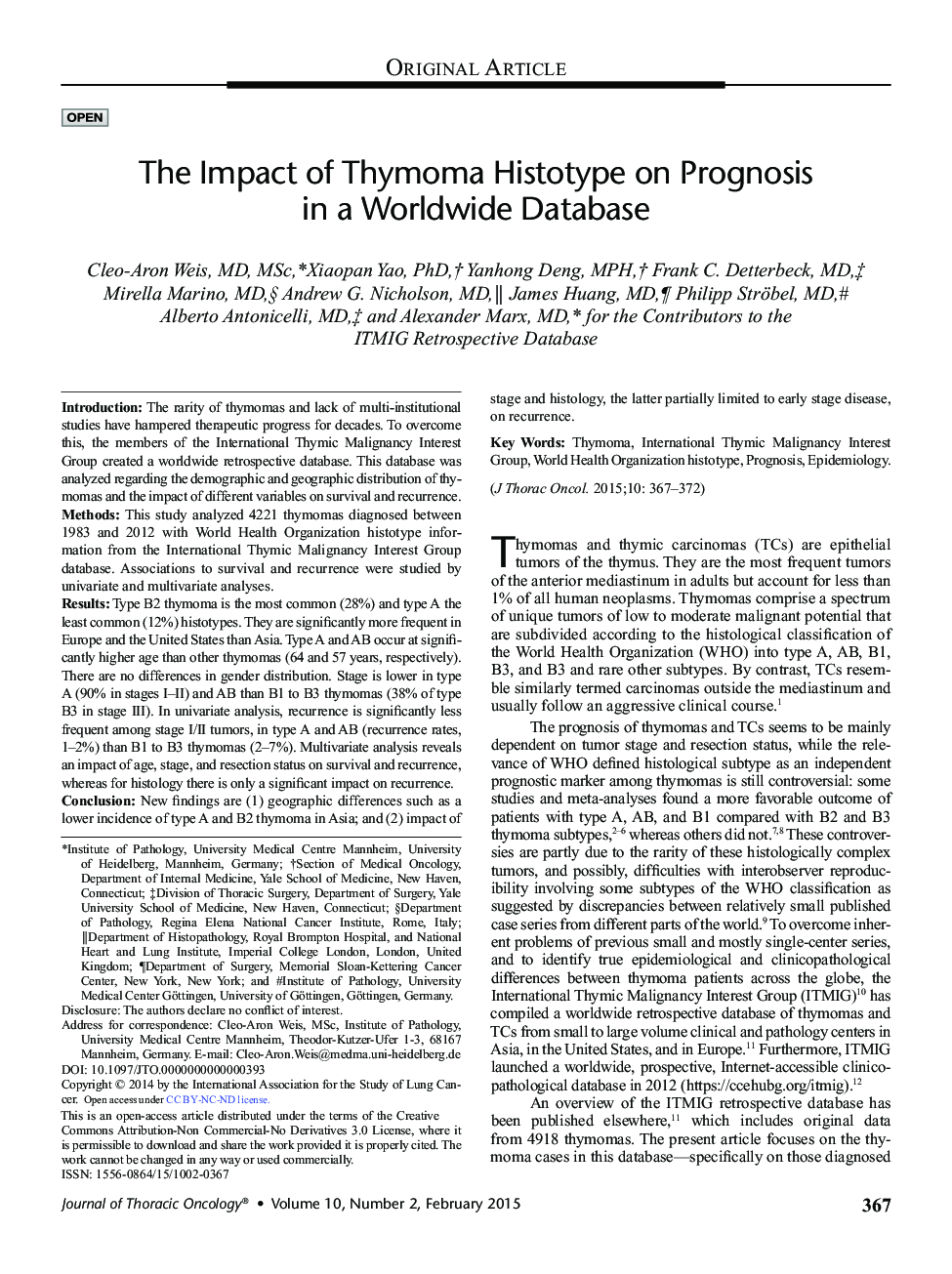| Article ID | Journal | Published Year | Pages | File Type |
|---|---|---|---|---|
| 6193229 | Journal of Thoracic Oncology | 2015 | 6 Pages |
IntroductionThe rarity of thymomas and lack of multi-institutional studies have hampered therapeutic progress for decades. To overcome this, the members of the International Thymic Malignancy Interest Group created a worldwide retrospective database. This database was analyzed regarding the demographic and geographic distribution of thymomas and the impact of different variables on survival and recurrence.MethodsThis study analyzed 4221 thymomas diagnosed between 1983 and 2012 with World Health Organization histotype information from the International Thymic Malignancy Interest Group database. Associations to survival and recurrence were studied by univariate and multivariate analyses.ResultsType B2 thymoma is the most common (28%) and type A the least common (12%) histotypes. They are significantly more frequent in Europe and the United States than Asia. Type A and AB occur at significantly higher age than other thymomas (64 and 57 years, respectively). There are no differences in gender distribution. Stage is lower in type A (90% in stages I-II) and AB than B1 to B3 thymomas (38% of type B3 in stage III). In univariate analysis, recurrence is significantly less frequent among stage I/II tumors, in type A and AB (recurrence rates, 1-2%) than B1 to B3 thymomas (2-7%). Multivariate analysis reveals an impact of age, stage, and resection status on survival and recurrence, whereas for histology there is only a significant impact on recurrence.ConclusionNew findings are (1) geographic differences such as a lower incidence of type A and B2 thymoma in Asia; and (2) impact of stage and histology, the latter partially limited to early stage disease, on recurrence.
